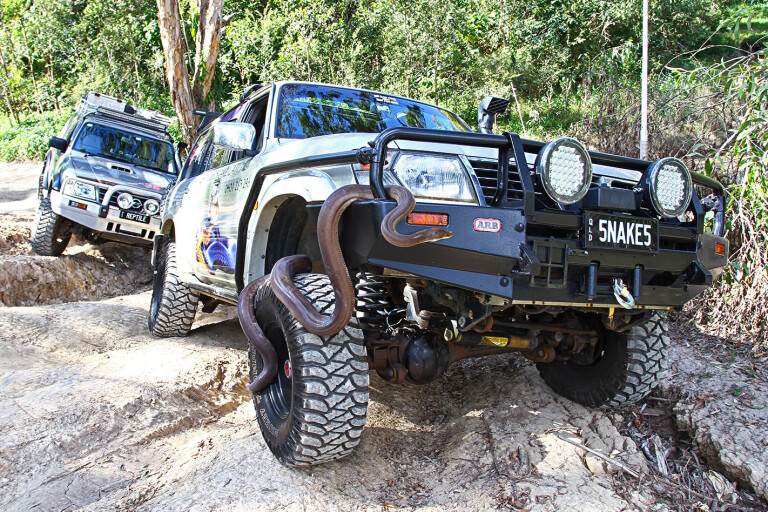
Some people are scared out of their brains at the site of any snake – venomous or not.
Some people shy away from snakes. Clever folk leave them alone. Not-so-clever folk pick up a shovel and attempt to whack them, figuring, ‘the only good snake is a dead one’.
That’s exactly why Tony Harrison – from Gold Coast-based business Reptile Relocation and Awareness – started helping neighbours catch and remove snakes and other reptiles from backyards, roof cavities and inside homes. Tony figured saving these few snakes was the right thing to do, given his love of all things reptilian.
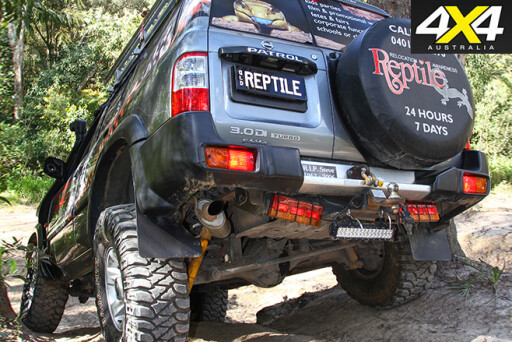 Fast forward some 20 years and those initial ‘good deeds’ have turned into a full-time job that keeps Tony and his fairer half, Brooke, busy catching and relocating reptiles. They even take reptile awareness bookings for shows at schools, chains of hardware stores and kids’ parties.
Fast forward some 20 years and those initial ‘good deeds’ have turned into a full-time job that keeps Tony and his fairer half, Brooke, busy catching and relocating reptiles. They even take reptile awareness bookings for shows at schools, chains of hardware stores and kids’ parties.
Tony has been playing with reptiles since his junior years but, not one to do things half-heartedly, he is now fully qualified for his slithery relocation profession (he has a Damage Mitigation Permit) and is even certified to keep crocs up to a certain length.
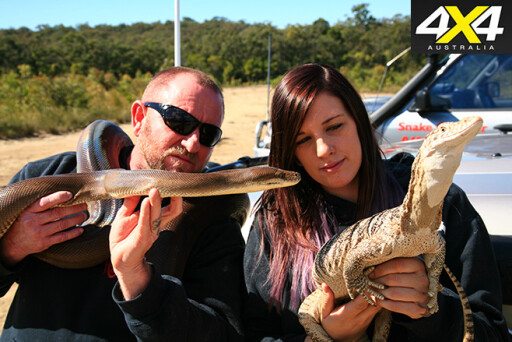 Getting back to those junior years, Tony’s family backyard swimming pool was quite different from most pools. For a start, there was no water in it. Rather, it was filled with sand, dirt, logs and grass, and was used as a gigantic cage for keeping unusual pets including blue-tongue lizards, bearded dragons and frill-necked lizards, which would regularly get taken to school for ‘show and tell’.
Getting back to those junior years, Tony’s family backyard swimming pool was quite different from most pools. For a start, there was no water in it. Rather, it was filled with sand, dirt, logs and grass, and was used as a gigantic cage for keeping unusual pets including blue-tongue lizards, bearded dragons and frill-necked lizards, which would regularly get taken to school for ‘show and tell’.
These days, Tony is also in high demand supplying reptiles to movie directors and stars (who want reptiles featured in their flicks), advertising agents, models and other organisations that want to include something with scales in their promotional photos and videos.
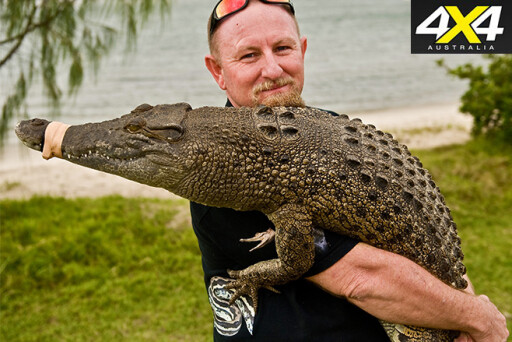 He recently spent time with Rebecca Gibney on the Queensland set of the new mini-series Wanted, and has been interviewed various times for current affairs and news programs.
He recently spent time with Rebecca Gibney on the Queensland set of the new mini-series Wanted, and has been interviewed various times for current affairs and news programs.
Funny moments? Yep. Tony says he has been called out many times to catch snakes that have turned out to be rubber toys. Then there was the time he was called to catch a radiator hose, a rolled-up towel and, wait for it, a long dog poo – oh well, better to be safe than sorry, eh!
TWIN PATROLS
Well, they’re not really twin Patrols. Tony’s GU is a 3.0-litre diesel; Brooke’s GU is a 4.5-litre petrol guzzler. Tony uses his Patrol to catch and release wild animals, while Brooke uses hers for transporting their ‘captive’ reptiles to and from shows and movie sets. This helps prevent any unwanted diseases from being transmitted from wild animals to captive ones.
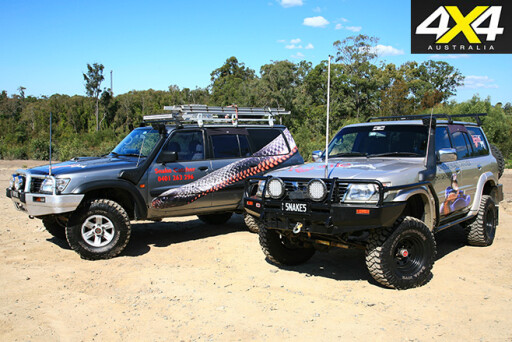 Neither Patrol features bucketloads of aftermarket gear, but they have just enough to allow them to get to the bush locations where captured animals are released.
Neither Patrol features bucketloads of aftermarket gear, but they have just enough to allow them to get to the bush locations where captured animals are released.
They are also equipped for a bit of weekend play in the mud and rocks, and Tony and Brooke recently completed a long-distance work trip through north-west Queensland in Brooke’s Patrol – so they do tour quite a bit to transport reptiles around the country.
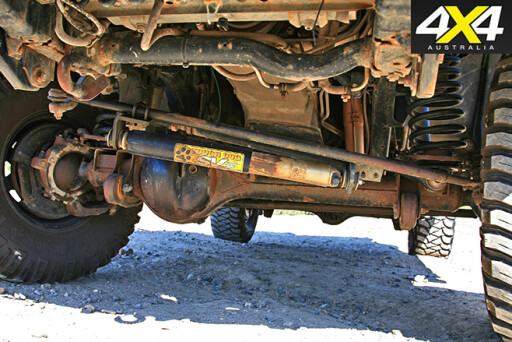 Tony is happy to admit that Brooke’s Patrol is a little more capable than his in the rougher stuff. Hers has ARB air lockers, raised Tough Dog suspension, a Tough Dog adjustable steering stabiliser, a snorkel and an electric winch.
Tony is happy to admit that Brooke’s Patrol is a little more capable than his in the rougher stuff. Hers has ARB air lockers, raised Tough Dog suspension, a Tough Dog adjustable steering stabiliser, a snorkel and an electric winch.
But he figures he gets at least one tick in his favour – his has taller 35-inch Mickey Thompson Baja MTZs, while Brooke’s has 33-inchers.
 Brooke’s tougher-looking Patrol also sports a steel ARB bullbar and side rails as well as a rear, twin wheel carrier and a Uniden RM770 remote mic UHF radio.
Brooke’s tougher-looking Patrol also sports a steel ARB bullbar and side rails as well as a rear, twin wheel carrier and a Uniden RM770 remote mic UHF radio.
Both Patrols run LED aftermarket lighting, with Brooke’s choice being a pair of rounds on the front bar and a smaller round pair on a telescopic pole attached to the rear wheel carrier.
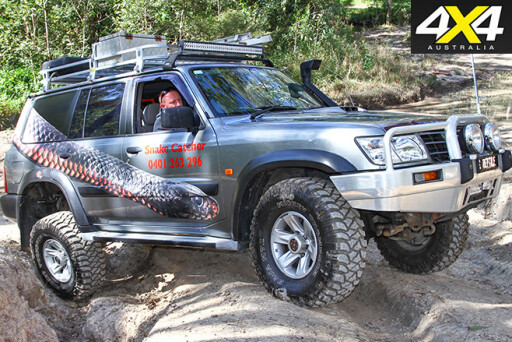 Tony opted for the huge LED bar perched up high on the roof. These are backed up by a pair of halogens and a few smaller LED bars on the front bar. Amusingly, Tony’s Patrol features a custom stainless-steel swinging mount for holding his rear LED reversing light.
Tony opted for the huge LED bar perched up high on the roof. These are backed up by a pair of halogens and a few smaller LED bars on the front bar. Amusingly, Tony’s Patrol features a custom stainless-steel swinging mount for holding his rear LED reversing light.
That’s a nice way of saying it has been fitted in a dodgy way – but it does have the advantage of folding out of the way when scraping over large rock boulders.
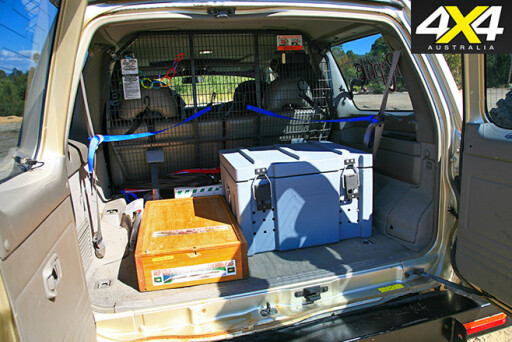 Inside, the Patrols’ rears don’t have fancy all-inclusive kitchens or roll-out drawer systems; rather, both have cargo barriers and the relevant boxes and compartments to house snakes and other reptiles.
Inside, the Patrols’ rears don’t have fancy all-inclusive kitchens or roll-out drawer systems; rather, both have cargo barriers and the relevant boxes and compartments to house snakes and other reptiles.
Another useful extra on Tony’s roof rack is a water tank, as he finds he regularly needs to have a quick wash after capturing reptiles.
 Tony and Brooke have devoted their lives to helping save reptiles. They are on call 24 hours a day and are adamant that snakes shouldn’t be killed just because people are scared of them.
Tony and Brooke have devoted their lives to helping save reptiles. They are on call 24 hours a day and are adamant that snakes shouldn’t be killed just because people are scared of them.
Both are heavily involved in the education of all things scaly, they are avid photographers and are always snapping pics and videos of their animals. Take a moment to check out their website: www.goldcoastsnakecatcher.com.au
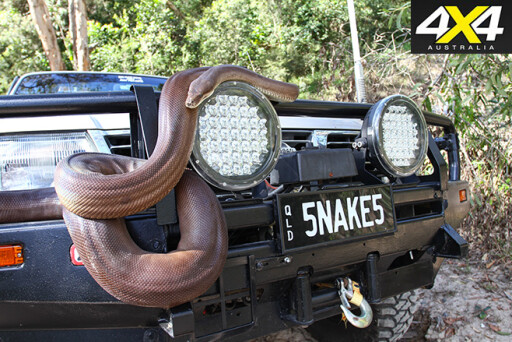 Oh, and what better way is there to show to the public their commitment than with custom number plates: ‘5NAKE5’ and ‘REPTILE’?
Oh, and what better way is there to show to the public their commitment than with custom number plates: ‘5NAKE5’ and ‘REPTILE’?
Venomous or dangerous?
Tony and Brooke informed us that most snakes’ fangs are short and, provided you’re wearing tough footwear and thick, long pants, the chances of being poisoned by one of Australia’s highly venomous snakes are low. I reckon hiking boots and jeans have probably saved hundreds of lives – the good-old double pluggers aren’t the smartest choice of footwear sometimes.
Tony also told us the best thing to do when you come across a snake is to leave it alone, as Australia has some of the most deadly snakes in the world. Don’t be a hero and try to pick it up – while the experts make it look easy, there are tricks to the trade. Next, don’t go chucking stones at it and definitely don’t set off on a beheading mission with the shovel. You might get lucky with your first swipe, but if you miss, chances are, the snake will be quicker than you and you’ll end up wrapping a bandage around a snake bite.
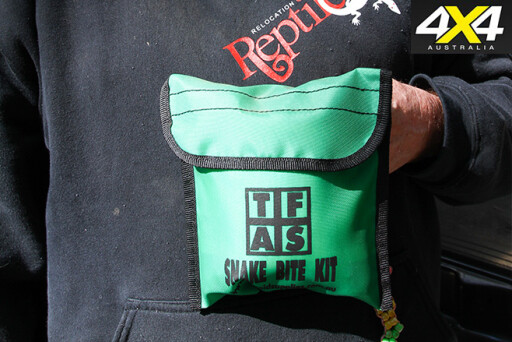 Oh, you don’t carry one of those? You should. When applied correctly, bandages are proven to save lives by slowing the movement of venom in your body’s lymphatic system – the fat layer just under your skin. The pressure bandage grants life-saving time to get help. The more you wail and flop around, the more the venom will flow through your body, making it harder for someone to save your life.
Oh, you don’t carry one of those? You should. When applied correctly, bandages are proven to save lives by slowing the movement of venom in your body’s lymphatic system – the fat layer just under your skin. The pressure bandage grants life-saving time to get help. The more you wail and flop around, the more the venom will flow through your body, making it harder for someone to save your life.
Tony said, if you are bitten, there is no need to catch or kill the snake to identify it. The best thing to do is to mark the bite area with a pen or marker (just in case you pass out and can’t assist), apply the compression bandage, keep calm and get help on the double. Once the doctors have swabbed the bite area, they can determine the type of snake and provide the relevant anti-venom to get you back on your feet.
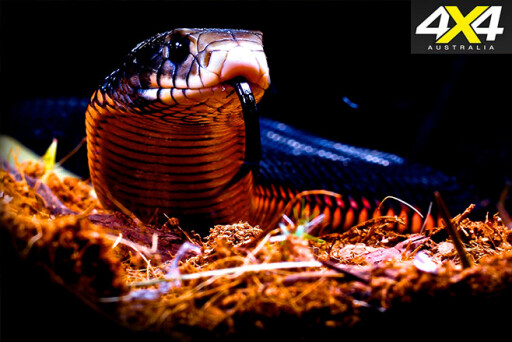 As for Tony’s list of most venomous snakes in Australia, at number five is the Death Adder, followed by the tiger snake, the coastal taipan and the common brown snake. The most venomous is the western taipan.
As for Tony’s list of most venomous snakes in Australia, at number five is the Death Adder, followed by the tiger snake, the coastal taipan and the common brown snake. The most venomous is the western taipan.
“Don’t be confused about most deadly and most venomous,” Tony said. “While the western taipan is the most venomous land animal on the planet, it has very short fangs, lives in remote areas and is relatively well behaved.”
“Meanwhile, the common brown snake,” Tony said, “is found from the bottom end of Australia right up to the top and covers every type of landscape in eastern Australia. It strikes 12 times in two seconds and has the second most powerful venom and the shortest fuse of them all. Because of this they are considered the most dangerous.”

There’s one last point Tony wanted to make clear: “Brown snakes aren’t always brown in colour. They vary in colour and pattern, making them hard to identify for non-experts.”
Tony’s website (goldcoastsnakecatcher.com.au) is the culmination of over 20 years’ experience and features a huge array of snakes as well as heaps of other great info.

COMMENTS